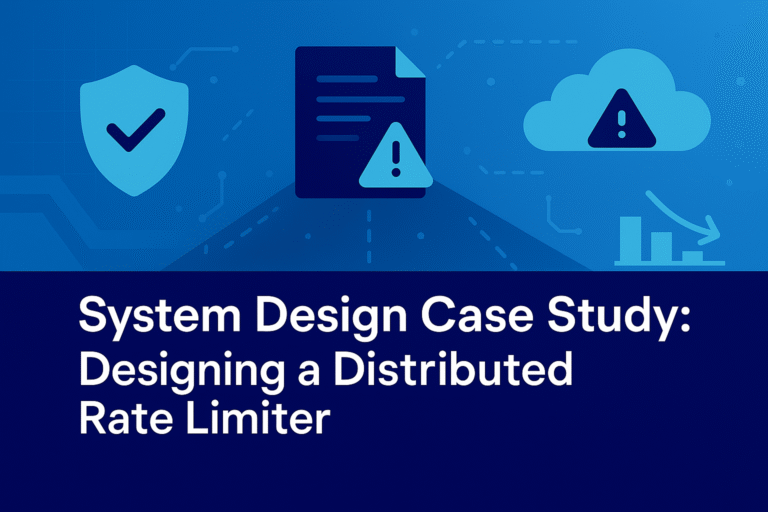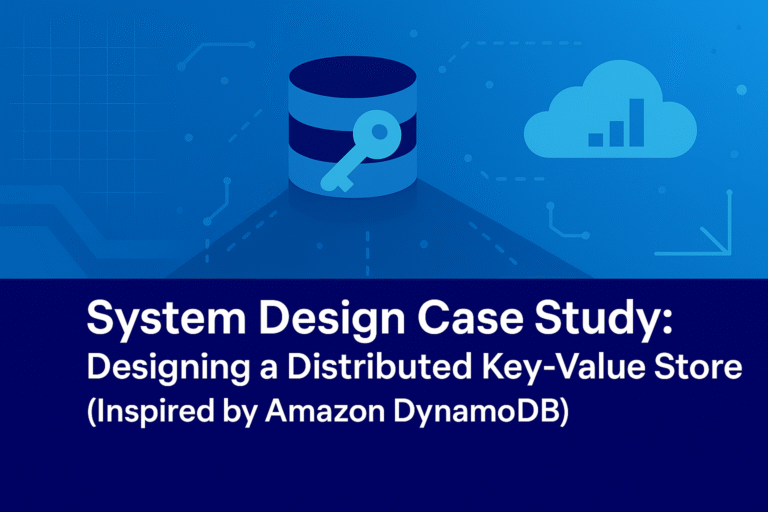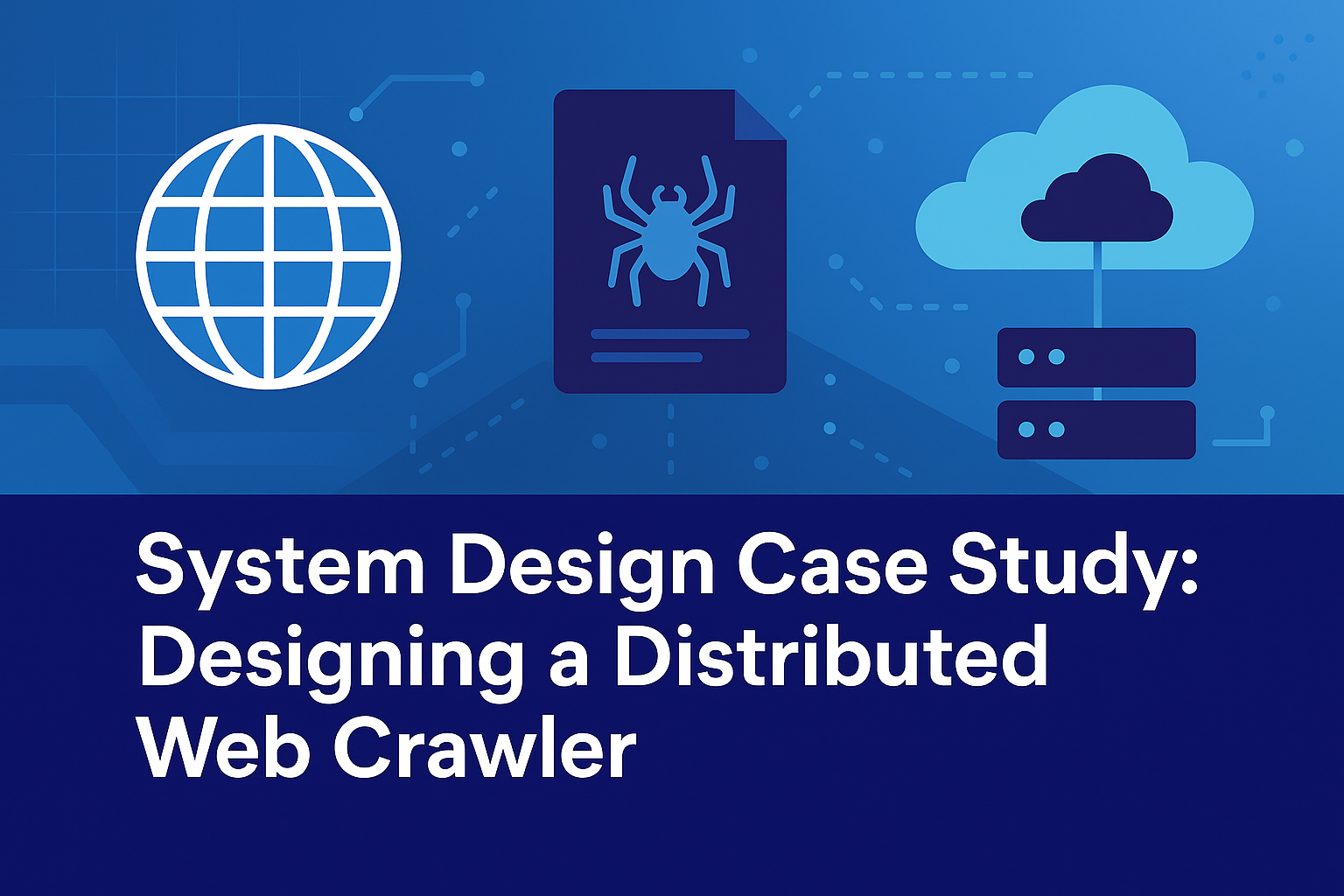Concept Explanation
gRPC (gRPC Remote Procedure Call) and Protocol Buffers (Protobuf) are powerful technologies designed for high-performance, low-latency communication in distributed systems. gRPC and Protobuf are widely adopted in microservices architectures by companies like Google, Netflix, and Uber, enabling efficient, scalable communication across services. Together, they address the need for fast, reliable, and interoperable communication in modern applications, particularly in environments requiring real-time data exchange, such as streaming platforms, financial systems, and IoT networks.
- gRPC: An open-source, high-performance RPC framework developed by Google, built on HTTP/2. It enables clients and servers to invoke remote procedures as if they were local function calls, abstracting network complexity. gRPC supports bidirectional streaming, multiplexing, and advanced features like authentication and load balancing, making it ideal for low-latency, high-throughput systems.
- Protocol Buffers: A language-agnostic, binary serialization format used by gRPC to define and exchange structured data. Protobuf schemas define message structures and service interfaces, offering compact, efficient data transfer compared to JSON or XML.
These technologies excel in scenarios where performance and scalability are critical, offering significant advantages over traditional REST APIs in terms of latency and bandwidth efficiency. This comprehensive guide explores their mechanisms, architecture, real-world applications, implementation considerations, trade-offs, and strategic decisions, providing a thorough understanding for system design professionals.
Detailed Mechanisms
Protocol Buffers
- Mechanism: Protocol Buffers is a serialization framework that defines data structures (messages) and services in .proto files using a schema language. These schemas are compiled into code for languages like Go, Java, Python, or C++, generating efficient serialization/deserialization routines. Protobuf uses a binary format, reducing payload size and parsing time compared to text-based formats like JSON.
- Process:
- Define a schema in a .proto file (e.g., message User { string id = 1; string name = 2; }).
- Compile the schema using the protoc compiler, generating code (e.g., User class in Java).
- Serialize data to binary (e.g., a User object becomes a compact byte array).
- Transmit over the network, where the receiver deserializes it back to a native object.
- Key Features:
- Compact: Binary format reduces payload size (e.g., 50% smaller than JSON for a 1KB message).
- Fast: Serialization/deserialization is optimized, achieving < 1ms for typical messages.
- Type-Safe: Strong typing ensures data integrity across languages.
- Backward/Forward Compatibility: Schema evolution supports adding fields without breaking clients.
- Limitations:
- Requires schema definition and compilation, adding setup complexity.
- Binary format is less human-readable than JSON/XML.
- Limited introspection compared to JSON-based APIs.
gRPC
- Mechanism: gRPC builds on Protobuf and HTTP/2 to provide a framework for remote procedure calls. It defines services and methods in .proto files, generating client and server stubs for seamless communication. HTTP/2’s multiplexing, header compression, and streaming enable high-performance interactions.
- Process:
- Define a service in a .proto file (e.g., service UserService { rpc GetUser(UserRequest) returns (UserResponse); }).
- Compile to generate stubs (e.g., UserServiceStub in Go).
- Client calls a method (e.g., client.GetUser(request)), serialized as a Protobuf message.
- Server processes the request, invoking the corresponding method, and returns a response.
- Key Features:
- HTTP/2-Based: Supports multiplexing (multiple requests over one connection), reducing latency.
- Streaming: Offers unary (single request/response), server streaming, client streaming, and bidirectional streaming.
- Interoperability: Supports multiple languages (e.g., Go, Java, Python).
- Built-in Features: Includes authentication (e.g., TLS, OAuth), load balancing, and deadlines.
- Limitations:
- HTTP/2 complexity increases server setup.
- Limited browser support (requires gRPC-Web for web clients).
- Steeper learning curve than REST.
Communication Modes
- Unary: Single request, single response (e.g., fetch user data).
- Server Streaming: Single request, multiple responses (e.g., stream log updates).
- Client Streaming: Multiple requests, single response (e.g., upload sensor data).
- Bidirectional Streaming: Continuous request/response exchange (e.g., real-time chat).
Real-World Example: Netflix’s Streaming Platform
Netflix, serving 300 million users globally, uses gRPC and Protobuf in its microservices architecture to handle real-time interactions for streaming, recommendations, and billing.
- Scenario: A user in Mumbai streams a movie, requiring coordination between the playback-service, recommendation-service, and billing-service.
- Protobuf Schema:
message StreamRequest {
string user_id = 1;
string movie_id = 2;
}
message StreamResponse {
bytes chunk = 1;
int64 position = 2;
}
service PlaybackService {
rpc StreamMovie(StreamRequest) returns (stream StreamResponse);
}- gRPC Implementation:
- The client (Netflix app) sends a StreamRequest to the playback-service via gRPC.
- The server streams StreamResponse messages with video chunks (e.g., 1MB each) over a bidirectional HTTP/2 connection, achieving < 50ms latency per chunk.
- The recommendation-service uses unary RPCs to fetch suggestions (rpc GetRecommendations), integrating with the user-service via client-side discovery.
- Billing-service processes charges via a unary RPC, ensuring < 100ms latency for 10,000 transactions/second.
- Performance: Netflix handles 100,000 gRPC calls/second, with Protobuf reducing payloads by 60% compared to JSON (e.g., 10KB vs. 25KB per request). HTTP/2 multiplexing supports 10 concurrent streams per connection, maintaining 99.99% uptime.
- Security: gRPC uses TLS 1.3, with JWT authentication for user requests. Rate limiting (1,000 req/s/client) prevents abuse.
Implementation Considerations
- Protobuf:
- Schema Design: Define .proto files with clear, versioned messages (e.g., UserV1). Use reserved fields for backward compatibility (e.g., reserved 3 to 5).
- Compilation: Use protoc to generate code for target languages, integrating with build tools (e.g., Maven, Gradle).
- Deployment: Store schemas in a central repository (e.g., Git) for consistency across services.
- gRPC:
- Deployment: Deploy gRPC servers on Kubernetes with AWS EC2 (16GB RAM nodes), supporting 10,000 req/s. Use gRPC-Web for browser compatibility.
- Configuration: Enable HTTP/2 with TLS 1.3, set deadlines (e.g., 5s for unary RPCs), and configure load balancing via Envoy or AWS ALB.
- Service Discovery: Integrate with Consul or Eureka for dynamic instance resolution, updating every 10 seconds.
- Security: Implement mutual TLS for service-to-service authentication, OAuth for client access, and rate limiting (1,000 req/s/IP).
- Monitoring: Track metrics (p99 latency < 100ms, error rate < 0.1%, throughput) with Prometheus and Grafana. Log requests to CloudWatch for 30 days.
- Testing: Use gRPCurl for endpoint testing, JMeter for load testing (1M req/day), and chaos testing (Chaos Monkey) for resilience.
- Integration:
- Combine with API gateways (e.g., Kong) for external access, translating REST to gRPC.
- Use DataLoader for batching database queries, reducing latency by 30%.
- CI/CD: Automate deployments with Jenkins, using canary releases to 1% of traffic to detect issues.
Benefits and Weaknesses
- Protobuf:
- Benefits:
- Compact: 50-70% smaller payloads than JSON, reducing bandwidth costs.
- Fast: < 1ms serialization/deserialization for 1KB messages.
- Cross-Language: Supports 10+ languages, ensuring interoperability.
- Weaknesses:
- Schema Overhead: Requires upfront design and compilation.
- Debugging: Binary format complicates manual inspection.
- Benefits:
- gRPC:
- Benefits:
- Low Latency: < 50ms for unary calls, 10x faster than REST for streaming.
- Scalability: HTTP/2 multiplexing supports 100 concurrent requests/connection.
- Streaming: Enables real-time use cases like video streaming.
- Robust Features: Built-in deadlines, retries, and compression.
- Weaknesses:
- Complexity: HTTP/2 and Protobuf require advanced setup.
- Browser Support: Limited without gRPC-Web, adding overhead.
- Learning Curve: Steeper than REST for new teams.
- Benefits:
Trade-Offs and Strategic Decisions
- Performance vs. Complexity:
- Trade-Off: gRPC’s low latency (< 50ms) and small payloads (50% smaller) improve performance but increase setup complexity (e.g., Protobuf schemas, HTTP/2).
- Decision: Use gRPC for internal microservices with high-performance needs (e.g., Netflix streaming), REST for public APIs due to simplicity. Optimize with generated stubs to reduce boilerplate.
- Scalability vs. Cost:
- Trade-Off: gRPC’s multiplexing scales to 100,000 req/s but requires $2,000/month for 10 nodes; REST scales cheaper ($1,000/month) but with higher latency (200ms).
- Decision: Deploy gRPC in high-traffic regions (e.g., ap-south-1), using auto-scaling and Envoy for load balancing, validated by cost-benefit analysis.
- Interoperability vs. Browser Compatibility:
- Trade-Off: gRPC’s language support aids microservices but lacks native browser support; gRPC-Web adds 10ms latency.
- Decision: Use gRPC-Web for web clients, native gRPC for server-to-server, ensuring broad compatibility.
- Reliability vs. Overhead:
- Trade-Off: Deadlines and retries ensure reliability but add 5ms overhead per call.
- Decision: Set 5s deadlines for unary RPCs, enabling retries for 99.9% delivery success.
- Strategic Approach:
- Prioritize gRPC for internal, performance-critical services, integrating with service discovery (Consul).
- Use Protobuf for compact data, optimizing schemas for backward compatibility.
- Monitor latency and throughput, iterating to reduce latency by 20% via batching, validated by load tests (1M req/day).
Conclusion
gRPC and Protocol Buffers enable high-performance, low-latency communication, as exemplified by Netflix’s streaming platform. Their compact serialization, HTTP/2 efficiency, and streaming capabilities make them ideal for microservices. Implementation considerations and trade-offs guide strategic decisions, ensuring scalability and reliability.




